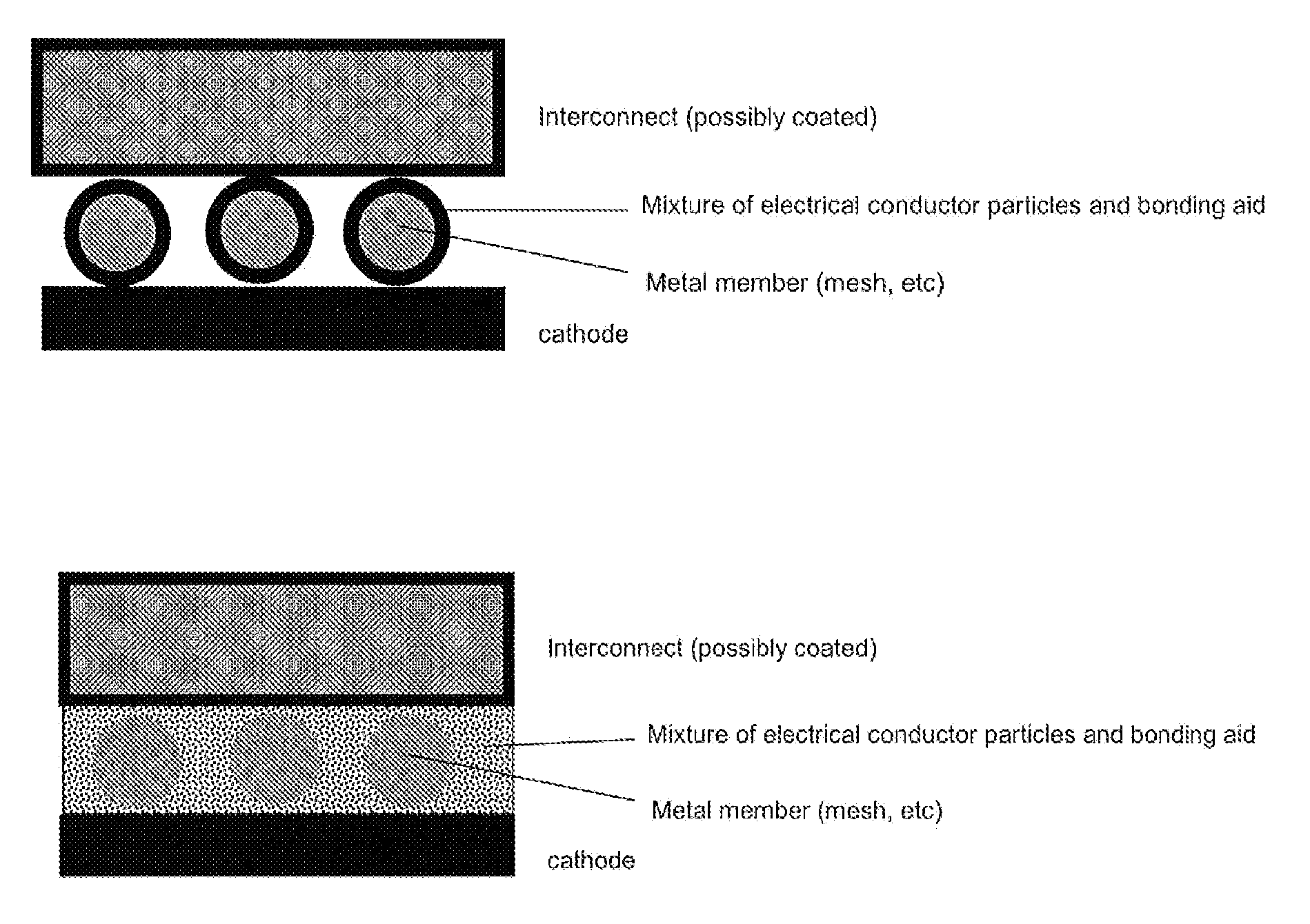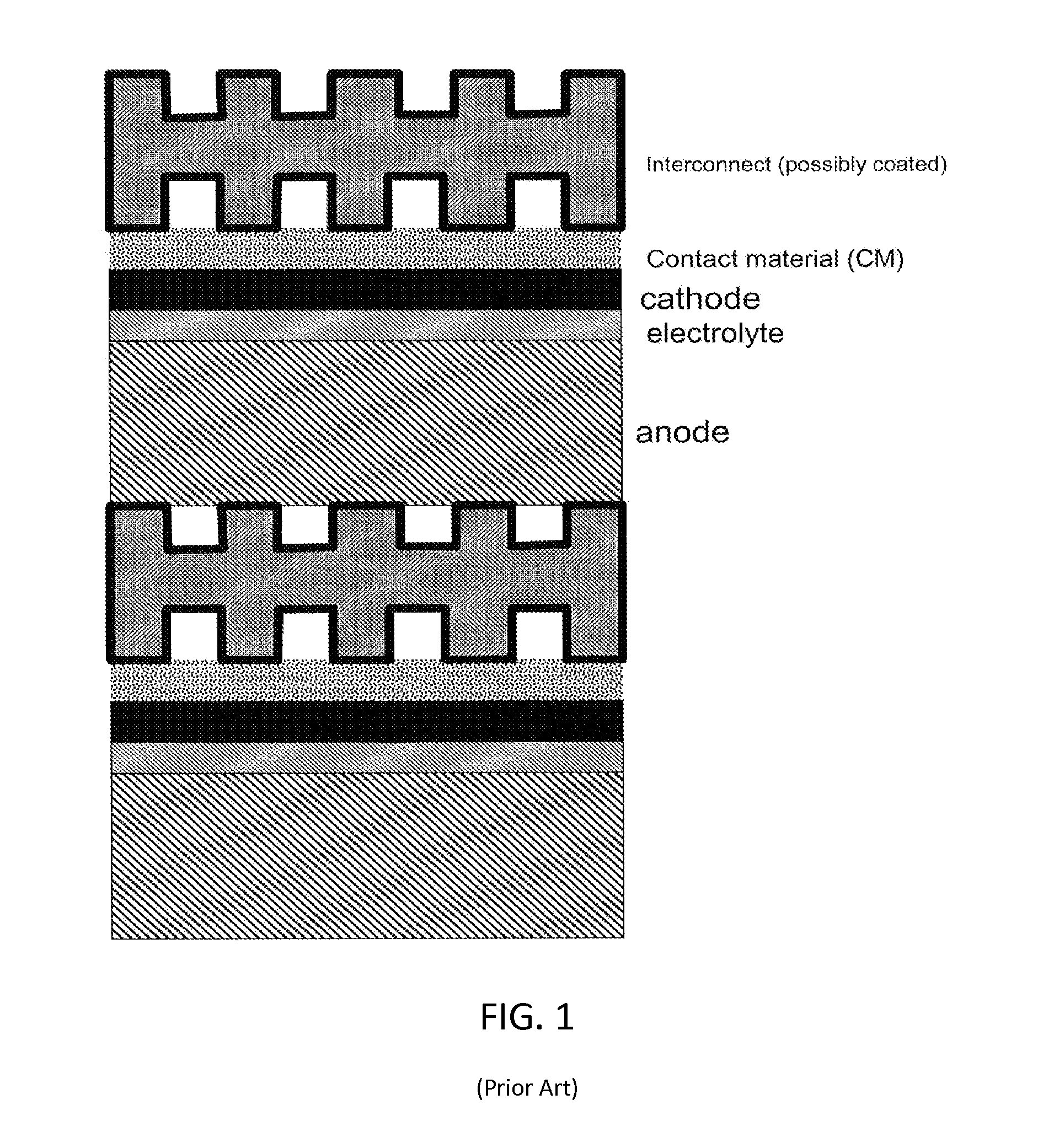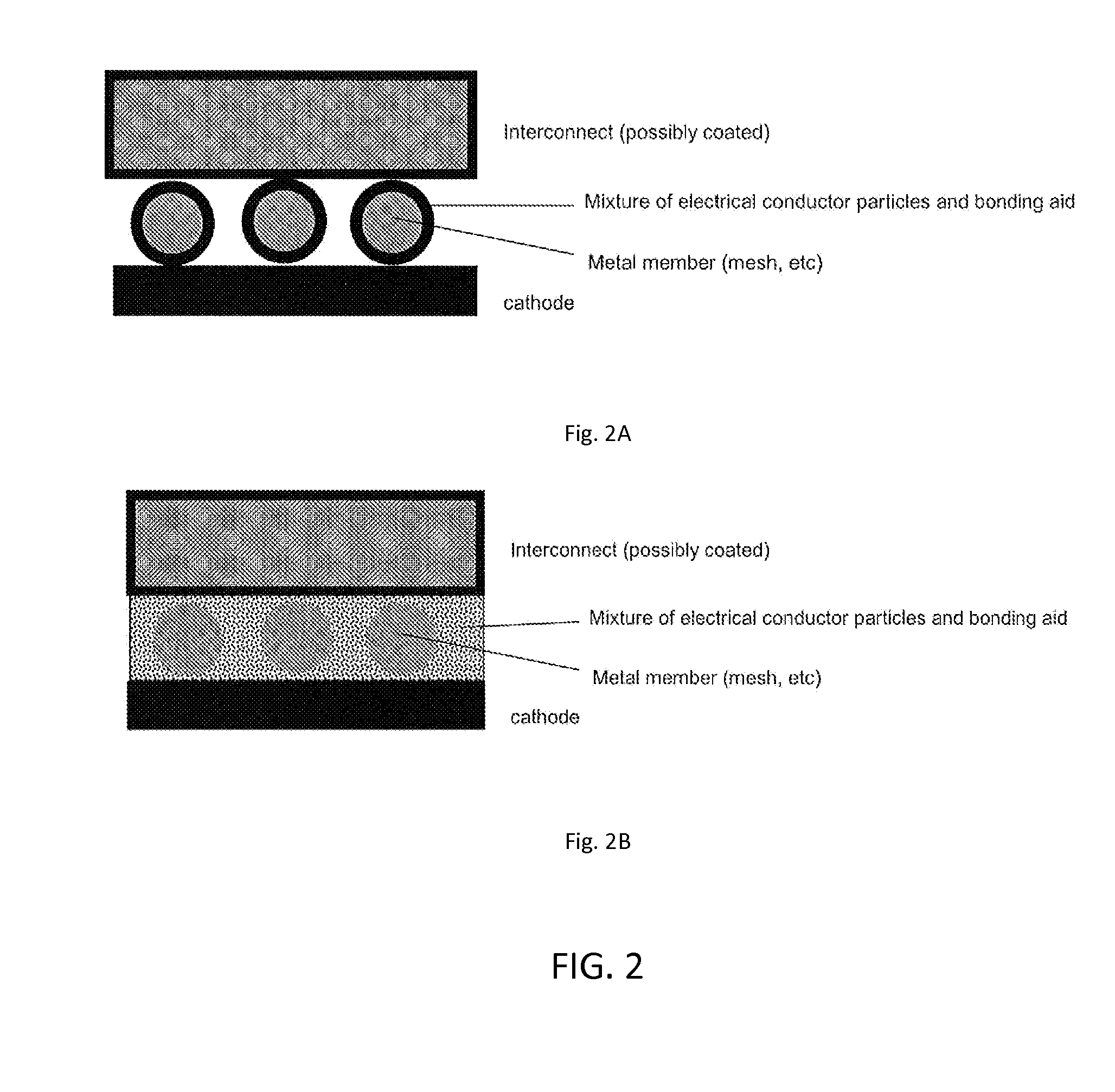Electrical Contact Material in High-Temperature Electrochemical Devices
- Summary
- Abstract
- Description
- Claims
- Application Information
AI Technical Summary
Benefits of technology
Problems solved by technology
Method used
Image
Examples
example 1
Inorganic Binder and Cathode Powder
[0064]LSM powder (Praxair Specialty Ceramics) was mixed with two different aqueous inorganic binder systems: 552 (sodium silicate, 43 wt % solids, Aremco) and 503 (aluminosilicate, 53 wt % solids, Aremco) to make a CCM paste. In each case, 2.5 g of LSM powder was mixed with 1 g of the aqueous binder system in a planetary mill (Thinky). Thus, after drying and curing, the weight loading of inorganic binder is 17% for LSM / 503 and 15% for LSM / 552. Sandwiches for area-specific resistance (ASR) testing were prepared by screen-printing the paste onto LSCF and stainless steel coupons (441 coated with (MnCo)3O4), and assembling them together in the order Steel / CCM / LSCF / CCM / Steel. The assembled sandwiches were then cured at 360° C., creating a well-bonded specimen. In contrast, sandwiches with LSM only (no inorganic binder) were also fabricated and sintered at 1000° C., but the LSM CCM layer failed easily during handling. Platinum wires were spot-welded onto...
example 2
Cathode Powder and Glass Bonding Aid
[0066]LSM powder (Praxair Specialty Ceramics) was mixed with sodium silicate-based glass-forming powder (Spruce Pine Batch) in various ratios from 1%-10% glass by weight. Pellets of the mixed powder were sintered at 900° C. and 1000° C. in air and tested for Vickers hardness at room temperature (FIG. 4). Addition of 2.5-10% glass dramatically improved the hardness of the LSM / glass composite, indicating improved bonding between the LSM particles. Bars of pure LSM and mixed powder were sintered at 1000° C. in air and tested for conductivity at 650-900° C. in air (FIG. 5). Increasing the glass concentration decreased the conductivity. All samples showed adequate conductivity, however, of >1 S / cm.
Optimization Studies
[0067]In a separate set of experiments, a survey was made to determine which of the many glasses would best serve as the CCM, and at what concentrations performance would be optimized. The important properties of the resulting composites, ...
PUM
 Login to View More
Login to View More Abstract
Description
Claims
Application Information
 Login to View More
Login to View More - R&D
- Intellectual Property
- Life Sciences
- Materials
- Tech Scout
- Unparalleled Data Quality
- Higher Quality Content
- 60% Fewer Hallucinations
Browse by: Latest US Patents, China's latest patents, Technical Efficacy Thesaurus, Application Domain, Technology Topic, Popular Technical Reports.
© 2025 PatSnap. All rights reserved.Legal|Privacy policy|Modern Slavery Act Transparency Statement|Sitemap|About US| Contact US: help@patsnap.com



